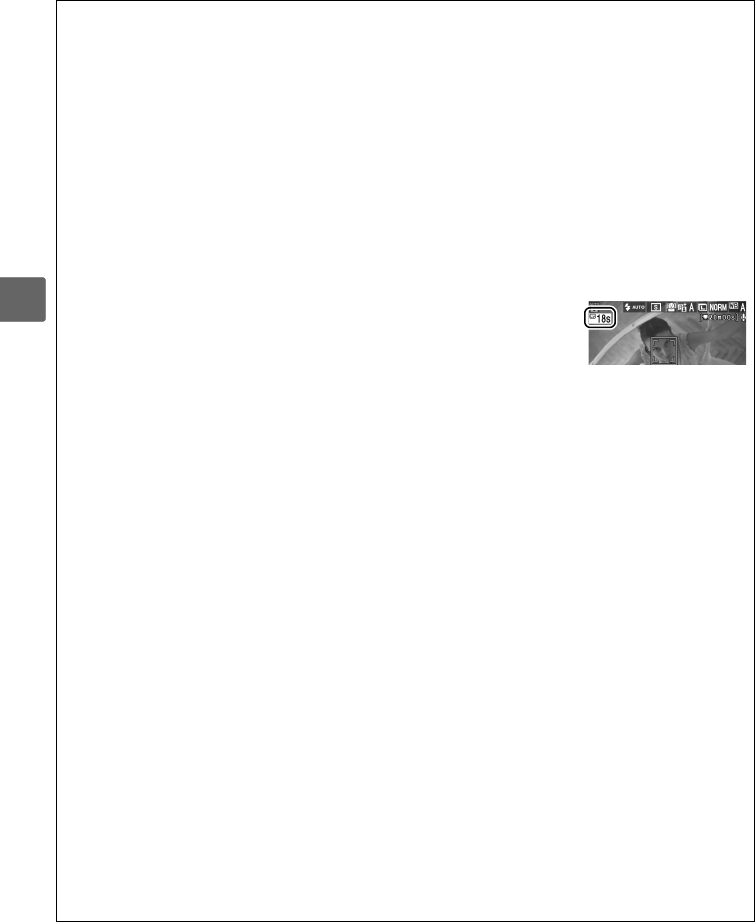
46
x
D Shooting in Live View Mode
To prevent light entering via the viewfinder from interfering with exposure, remove the
rubber eyecup and cover the viewfinder with the supplied DK-5 eyepiece cap before
shooting.
Although they will not appear in the final picture, banding or distortion may be visible in the
monitor under fluorescent, mercury vapor, or sodium lamps or if the camera is panned
horizontally or an object moves at high speed through frame.
Bright light sources may leave
after-images in the monitor when the camera is panned.
Bright spots may also appear.
When shooting in live view mode, avoid pointing the camera at the sun or other strong light
sources.
Failure to observe this precaution could result in damage to the camera’s internal
circuitry.
Live view shooting ends automatically if the monitor is closed or the lens is removed.
Live view mode can be used for up to an hour.
Note, however, that
when used in live view mode for extended periods, the temperature
of the camera’s internal circuits may rise, resulting in image noise
and unusual colors (the camera may also become noticeably warm,
but this does not indicated a malfunction).
To prevent damage to the camera’s internal
circuits, live view shooting will end automatically before the camera overheats.
A count-
down display will appear in the monitor 30 s before shooting ends.
At high ambient
temperatures, this display may appear immediately when live view mode is selected.
During live view, the camera displays the shutter speed and aperture in effect at the start of
live view.
Exposure is metered again when the shutter-release button is pressed all the way
down.
To reduce blur when using a tripod, choose On for Custom Setting d5 (Exposure delay
mode).
D Using Autofocus in Live View
Autofocus is slower in live view.
The camera may be unable to focus in the following
situations:
• The subject contains lines parallel to the long edge of the frame
• The subject lacks contrast
• The subject in the focus point contains areas of sharply contrasting brightness, or the
subject is lit by spot lighting or by a neon sign or other light source that changes in
brightness
• A cross (star) filter or other special filter is used
• The subject appears smaller than the focus point
• The subject is dominated by regular geometric patterns (e.g., windows in a skyscraper)
• The subject is moving
Note that the focus point may sometimes be displayed in green when the camera is unable
to focus.


















